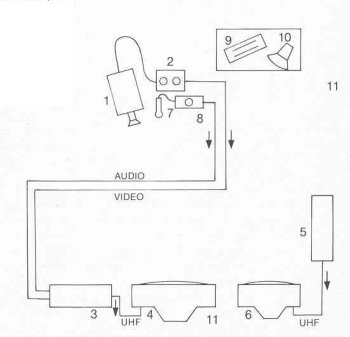beyond the zero
Table of Contents
introduction

How can one hide before that which never sets?
[Heraclitus. Frag. 16]
- about EVP, containment, hiding and steganography
detection (provision of a carrier), measurement and interpretation of:

- photo-detection (photochemistry, photodiode+amplification, photomultiplier)
- psychogeophysics(walk, fieldtrip, scrying with measurements)
- repurposing of common media apparatus (tape recorder, television, video recorder) as scrying medium
- audio work - traditional EVP
- overnight laboratory
psychogeophysics
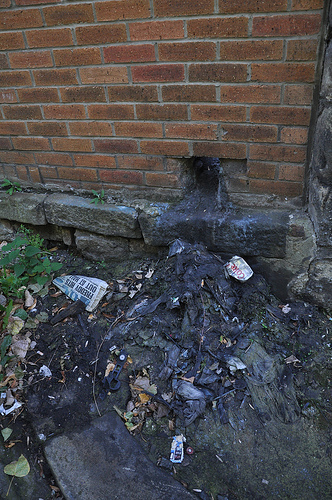
Psychogeography could set for itself the study of the precise laws and specific effects of the geographical environment, consciously organized or not, on the emotions and behavior of individuals.
[Introduction to a Critique of Urban Geography. Guy-Ernest Debord]
Psychogeophysics as a novel discipline can be defined as crossing the wave and code distinction, encompassing the disciplines of psychogeographics, data forensics and geophysical archaeology. It presents an interdisciplinary and highly speculative methodology investigating wider, complex signal ecologies through walks, discussions, working groups, measurement and quasi-scientific practice.
schedule
SATURDAY
- introductions and overview of schedule and techniques [this]
- SATURDAY
- introductions and overview of techniques
- retroactive PK (psychokinesis) experiment
- discussion and elaboration of classical EVP techniques (psychophon, ultrasound), recordings and interpretation
- start experiments with photo-detection
- planning of field trip/short scrying walk
- set up of an evening measurement lab
- SUNDAY
- interpretation of measurement lab results
- field trip
- photo-detection
- repurposing/work with video and imaging (staticx.py)
- future projects
- SATURDAY
- retroactive PK (psychokinesis) experimentation:
see also: (web page of John Walker: http://www.fourmilab.ch/rpkp/ )
also experiments
./readrng -d /dev/ttyUSB0 -f ~/testfile -8 -q 1024 python rpk.py python process_results.py
and then look up in table: bincentre.html
- discussion and elaboration of classical EVP techniques

- using UHER (red wire is signal in, to record to laptop volume high and rec levels lowest)
- 1] Inter-frequenz method (Raudive) - tuning to a point between broadcast stations.
- Radio frequency for EVP
Jurgenson frequency range: medium wave (MW) 1480 KHz (1,48 MHz)
Hans Otto Koenig frequency range: short wave (SW 31 m band 10 MHz and SW 41 m band 7 MHz)
Marcello Bacci frequency: SW 7 to 9 Megahertz,
Raymond Cass frequency: 127 MHz (air band frequency).
- 2] Microphone recordings (including use of audio frequency white noise)
- 3] Diode recordings
- 4] Autotransmission (Raudive):
signal generator connected directly to aerial socket of a radio
- 4] Other methods (ultrasound - some kind of cylinder)
- 5] Use of technical apparatus such as psychophon
- 6] software - evp.c
- root/xxxxx_2/xxxxx/trunk/evp
-
evp to from windowsize overlapon/off
cat /dev/dsp | evp 18 320 40 1 > /dev/dsp
as an example
- start experiments with photo-detection
- photodiode and thoughtography:
- TSL257 photodetector

- straight into Arduino with supply (middle pin) as 3.3v gives best results.
- fixed for mini-skry platform using main.c.photoamp with TSL257 on ADC3 - pin 6 of mini-skry
- set up of an evening measurement lab
- for light, EM (mini-scry), white noise, magnetic field, wide spectrum, and vibration (HD)?
- also audio (voice activated)
SUNDAY
- interpretation of measurement lab results
In gnuplot mode:
C-c C-r
set terminal png size 1024,768 set output "/root/projects/scotland/newcastle/n2/monk01.png" plot "/root/olderprojects/scotland/newcastle/n2/monk01" index 0 using 0:($1-160) with lines, "/root/olderprojects/scotland/newcastle/n2/monk01" index 0 using 2 with lines
-
and how to overlay graphs?
set multiplot set style line 1 linecolor rgb "green" plot "whitenoise06022010.log" w lines ls 1
-
and how to overlay graphs?
- further photo-detection
- photodiodes and recorder
- photodiode and thoughtography
- TSL257 photodetector
- straight into Arduino with supply (middle pin) as 3.3v gives best results.
- fixed for mini-skry platform using main.c.photoamp with TSL257 on ADC3 - pin 6 of mini-skry
- TSL257 photodetector
- photographic process
- photomultiplier:
connections for pre-amp board attached (using LF256) +- 12/15v:
black: GND, green: -V (blue), orange +V (yellow on repurposed PSU)
with -1000V to Cathode and responds quite obviously to light (0.5v to 10v swing).
- light carrier (laser, magnetometer setup)
- photodiodes and recorder
- repurposing/work with video and imaging
video feedback/recording (channel 36). camera into av3 (composite socket on front)
see also:
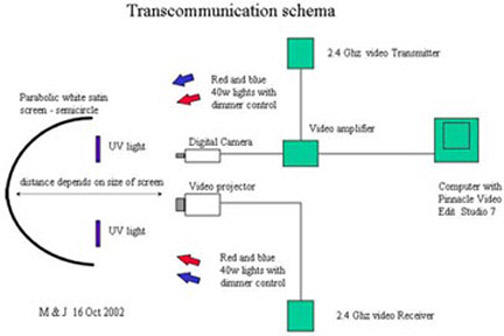
- staticx.py
- recordings without videotape and open top
- rough analysis of static frames
use recorder.py to record jpegs from CPIA webcam, analysis:
for rough image analysis (white vs. black pixels): analyse.sh
- other ideas for repurposing (hard drive, floppy drive)
- Hard Drive

- HD coil wired up to op27 op-amp circuit (10k feedback resistor), + with 10K to + and -. logging into minicom through ADC0 Arduino
- see looper for gnuplot script to reread live data (a=0, load looper)
-
also using octave to convert to audio semi-succesfully
xx=load("hdvoice"); saveaudio("testt",xx,"mu",16) (16 bit mu-law) then load as raw data (16 bit PCM) into audacity (then normalize!)
- working with floppy drive as magnet field sensor
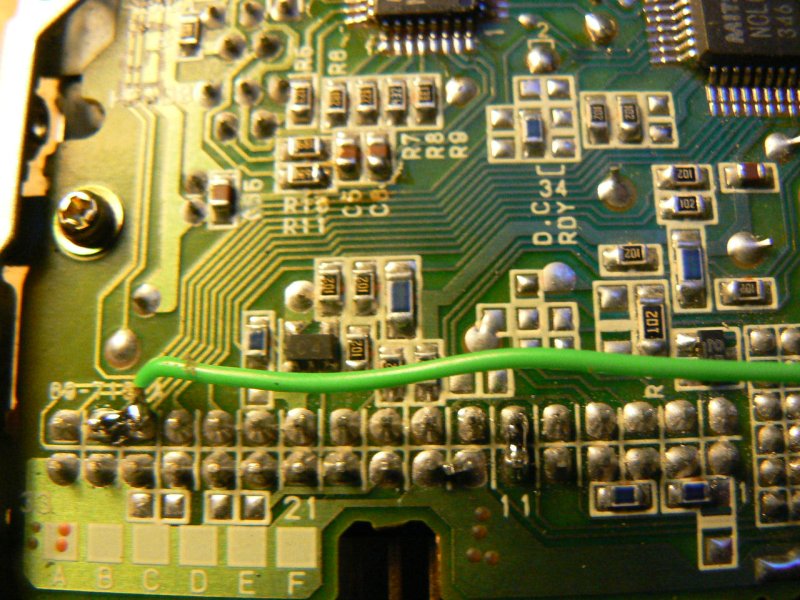
- connect pin 12 to GND to run motor
- signal seems stronger if comes from both pin 30 (data read) and 32 (select head) (?)
- playing floppy (also play with stepper (18 and/or 20 to GND) + feedback (sans floppy) through speaker
- staticx.py
research results embedded
Saturday 27 March 2010
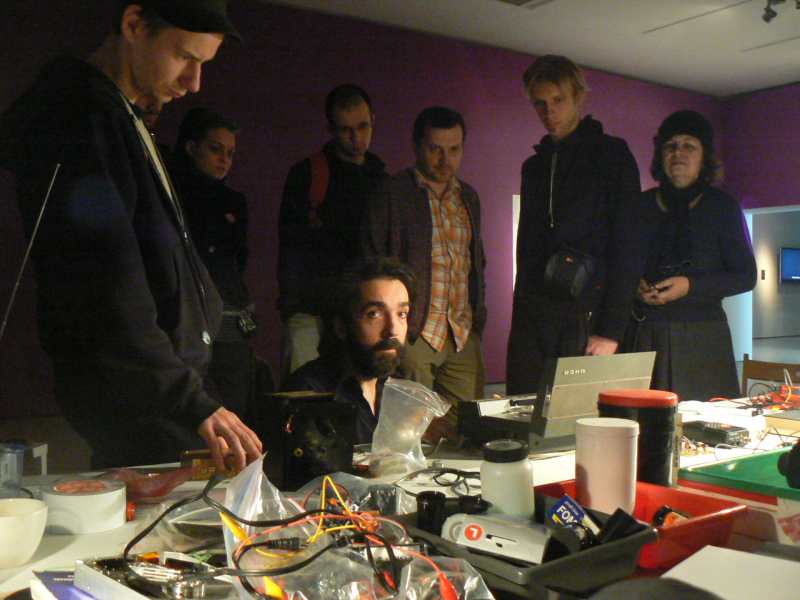
- audio recordings made using various EVP techniques:
http://www.archive.org/details/BeyondTheZero
… from both days
- ultrasonic setup using champagne flutes
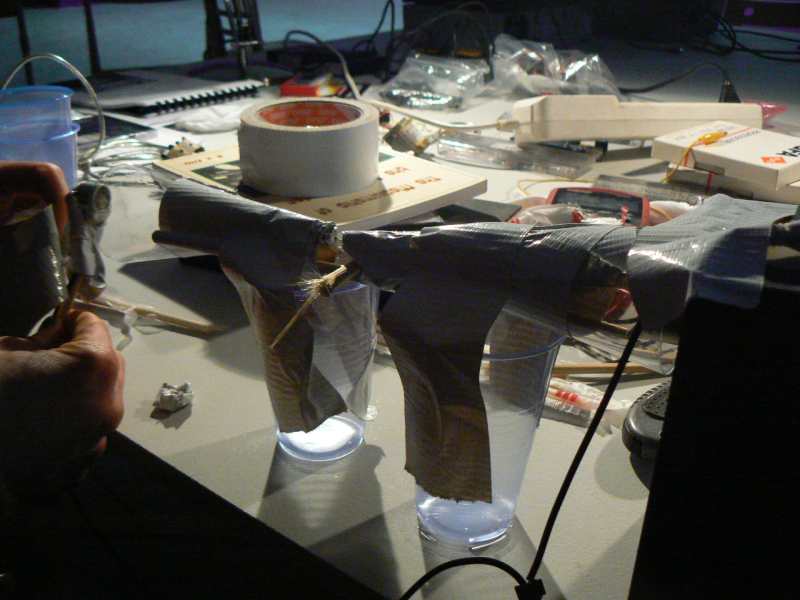
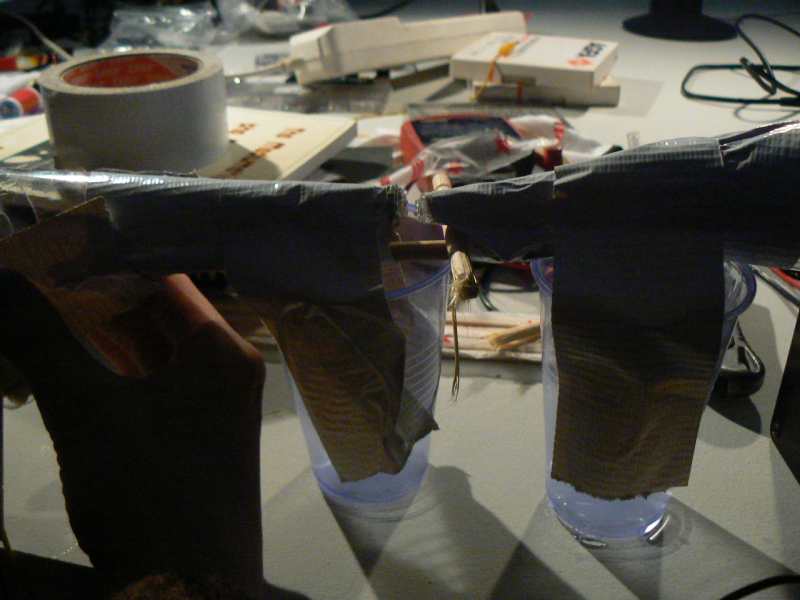
(after details in: The Mediumship of the Tape Recorder: A Detailed Examination of the (Jurgenson, Raudive) Phenomenon of Voice Extras on Tape Recordings - David J. Ellis)
- evening measurement lab


Set up in the cellars of the Castle of the Teutonic Knights commencing at 6PM and finishing at 12:00PM the following day (castle cellars closed at 6PM and opend at 10:00AM)
Measuring magnetic field strength (FGM-3 fluxgate magnetometer), light intensity (TSL257 photodetector), wide and narrow band radio frequency emmissions (Analog Devices AD8313 and Cypress CYWUSB6935), local white noise (transistor avalanche) using micro-skry platform:
http://www.1010.co.uk/org/scrying.html#sec-2.9
Also using voice activated recorder/dictaphone.
Sunday 27 March 2010
- thoutographic results from evening lab
- measurement results from evening lab:
magnetic field strength (no results - possibly lacked power)
light intensity:
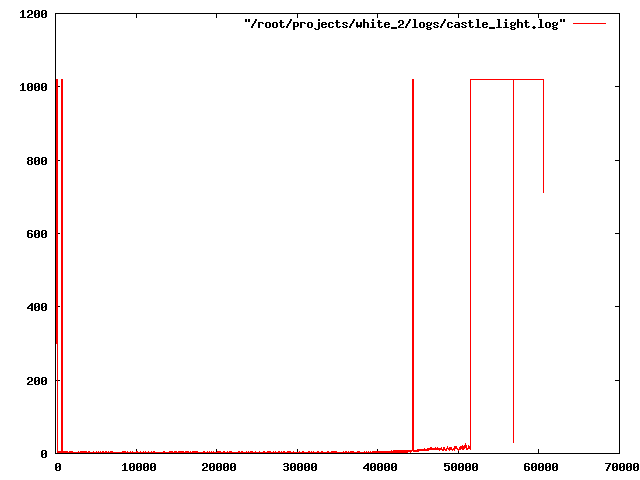
- wide and narrow band radio frequency emmissions:
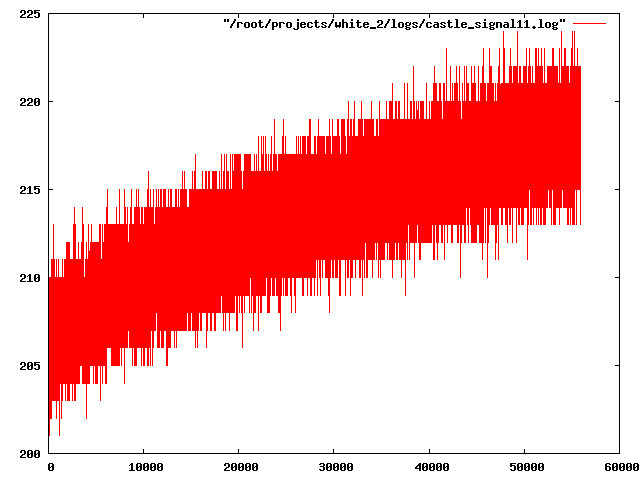
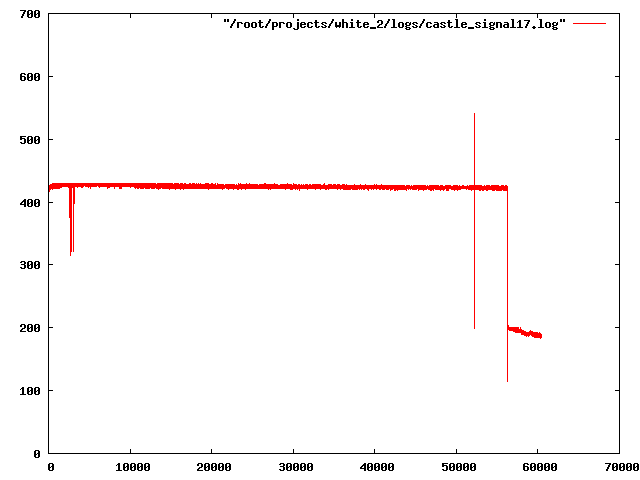

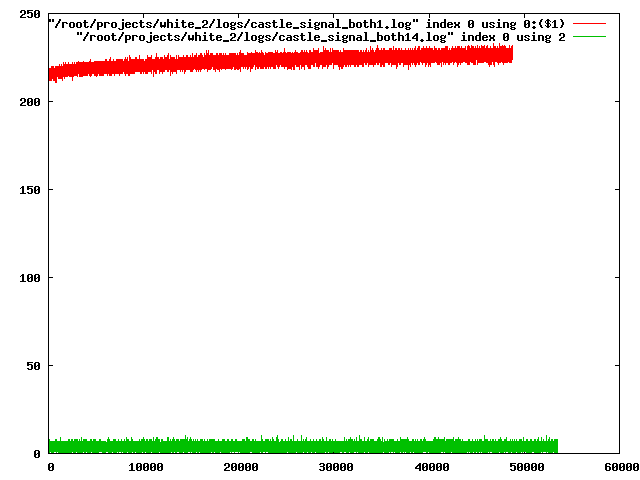

- local white noise:

- voice activated recorder:
- walk images

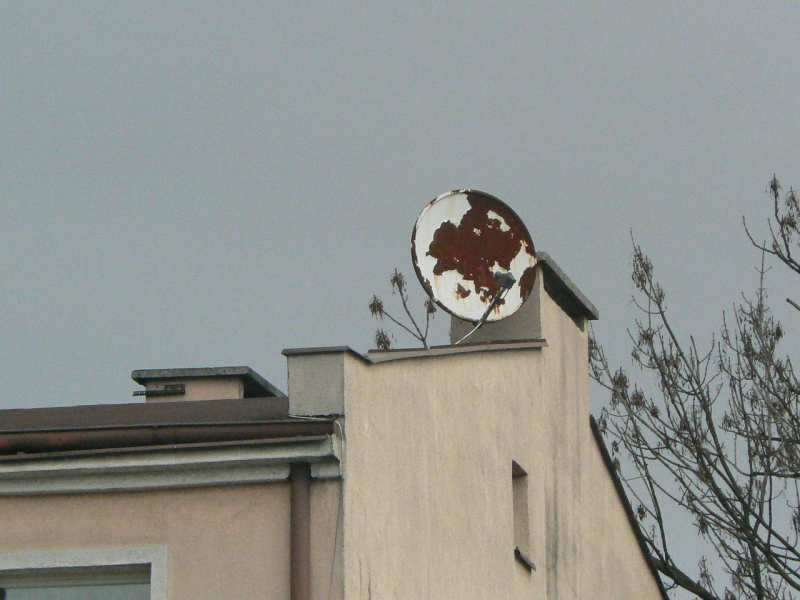
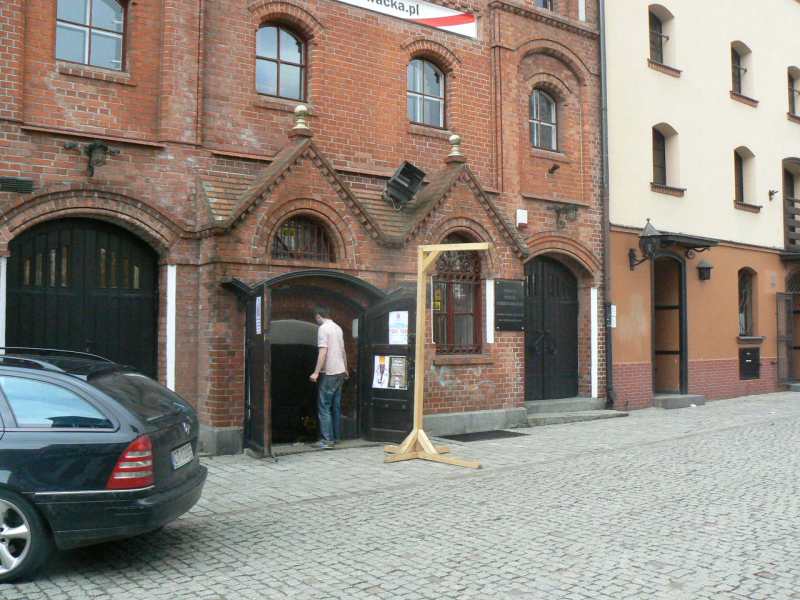

Walking to and from the castle.
- light/laser images
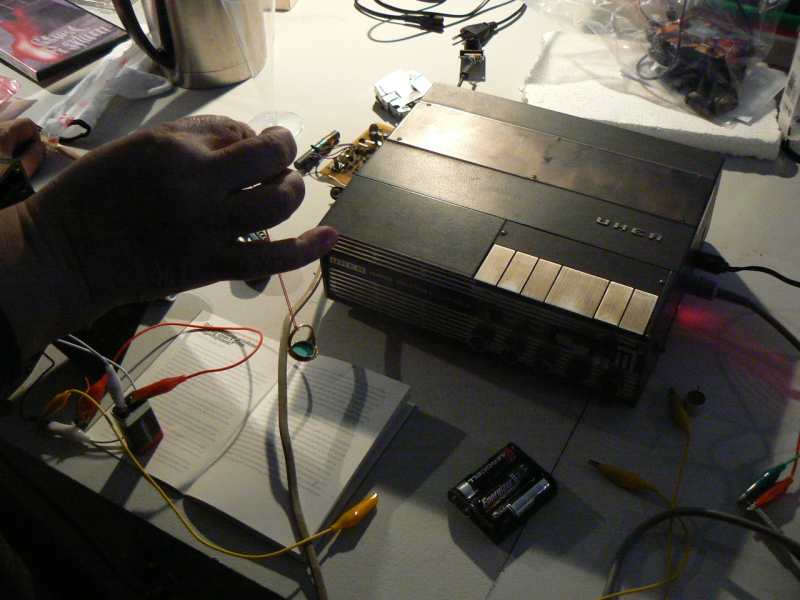


Magnetometer/pendulum with mirror, laser and photoamplifier as above.
- further recordings:
post-workshop

Ghost image en route Torun to Berlin.
references
http://www.1010.co.uk/org/em\_resources.html#sec-12
Rainer Holbe. Bilder aus dem Reich der Toten.
Jurgenson video doku: Gate to Eternity (mplayer)
Transcommunication via computer: http://www.worlditc.org/c\_04\_s\_bridge\_23.htm
other links:
code:
looper through gnuplot
a=a+1 plot [0:][80:110] "/root/gsr3.cap" with lines pause 0.1 if(a<50000) reread
plotting to a file with gnuplot:
set terminal png set output "/root/projects/white_2/images/castle_white5.png" plot "/root/projects/white_2/logs/castle_white5.log" with lines
analyse.sh: shell and octave
#!/bin/bash
for file in `ls *.jpg`
do
octave -qf image_an.m $file
done
# image_an.m
filename=argv();
pkg load image;
#disp(filename{1});
xx=imread(filename{1});
img = rgb2gray(xx);
ibw = img;
m=128;
disp(numel(ibw (ibw < m )))
staticx.py
#!/usr/bin/env python import random import time import struct import posix import fcntl from video4linux import * count=0 conteur=0 WIDTH=352 HEIGHT=288 fd = posix.open ("/dev/video0", posix.O_RDONLY); # switch to channel 0 channel = list(video_channel.unpack(video_channel.struct_size*'\0')) channel[video_channel.channel] = 0 channel = video_channel.unpack(fcntl.ioctl(fd, VIDIOCGCHAN,video_channel.pack(channel))) channel = video_channel.unpack(fcntl.ioctl(fd, VIDIOCSCHAN,video_channel.pack(channel))) # get parameters for mmap mbuf = video_mbuf.unpack(fcntl.ioctl(fd, VIDIOCGMBUF, video_mbuf.struct_size*'\0')) # memory map the video device file mm_fd = mmap.mmap(fd,mbuf[video_mbuf.size],mmap.MAP_SHARED,mmap.PROT_READ) # create empty structure mm = list(video_mmap.unpack(video_mmap.struct_size*'\0')) # fill structure mm[video_mmap.frame] = 0 mm[video_mmap.height] = HEIGHT mm[video_mmap.width] = WIDTH mm[video_mmap.format] = VIDEO_PALETTE_GREY # test capture = list(video_capture.unpack(video_capture.struct_size*'\0')) capture[video_capture.width]=100 capture = video_capture.unpack(fcntl.ioctl(fd, VIDIOCSCHAN,video_capture.pack(capture))) print capture # set up Tk and PIL import Image import Tkinter tk=Tkinter.Tk() import ImageTk photo = ImageTk.PhotoImage("L",(WIDTH,HEIGHT)) label= Tkinter.Label(tk,text="mini TV",image=photo,width=WIDTH,height=HEIGHT) label.pack() picture = '' try: while 1: fcntl.ioctl (fd, VIDIOCMCAPTURE, video_mmap.pack(mm)) fcntl.ioctl (fd, VIDIOCSYNC, struct.pack("i",0)) picturenew = mm_fd.read(WIDTH) mm_fd.seek(352*count) count = count + 1 print count picture += picturenew if count > 287: mm_fd.seek(0) count = 0 conteur+=1 im = Image.fromstring("L",(WIDTH,HEIGHT),picture) randnew = random.sample(range(0,288), 288) im.save("xyz"+str(conteur)+".jpg","JPEG") picture='' photo.paste(im) tk.update() except Tkinter.TclError: pass mm_fd.close()
credits
Workshop within the framework of:
Wach sind nur die Geister…" at Centrum Sztuki Współczesnej Znaki Czasu in Torun, Poland.
With special thanks to Kathrin Guenter, Inke Arns, Thibaut de Ruyter and Daniel Muzyczuk.
Date: 2010-04-07 13:43:22 BST
HTML generated by org-mode 6.31trans in emacs 23
